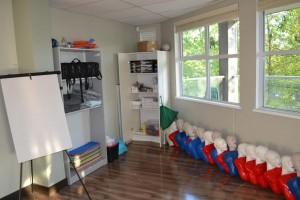First aid techniques and procedures are varied. However, all first aid actions follow four basic steps. Read on and learn more about each steps.
Here are the four basic steps in any first aid procedure:
STEP 1 – Recognize that there is an emergency.
Recognizing first aid situations is not that difficult. You
know it when a situation requires first aid even at first site. Use your senses (sight, hearing, and smelling) to recognize an emergency. Emergencies occur as unusual sights that catches your attention.
STEP 2 – Decide to act.
When you witness an accident or if someone suddenly becomes ill, you must decide to take action immediately. Some people would hesitate whether to help in emergency or not, which can lose precious time. A first aid training course can equip you with knowledge and skills, making you more confident about helping in an emergency.
STEP 3 – Ask for consent.
Once you have decided to act, your initial action should be to get permission to give care. Before rendering first aid to an adult, you must ask the consent or permission of the victim. Introduce yourself to the victim. Tell the person that you are first aid trained (if you are first aid certified), what you assess to be the problem, and what your plans of action are. If a conscious adult victim refuses your help, DO NOT give care. However, in cases where the victim is unconscious or appears confused or incoherent, the permission is implied.
If the victim is a minor or under age 18 (infant or child), you should get the consent from the parent or guardian, whoever is available. If the injury or condition is life-threatening but the guardian/parent is not around, the permission is implied. However, if the parent or guardian refuses your help, do not provide care. It is recommended that you dial 9-1-1 or your local emergency number.
STEP 4 – Activate the EMS system.
In most emergencies, you would need help of professionals. You will need to activate the EMS immediately so they can augment the life-saving procedures you provide and transport the victim to nearest medical facility. Dial 9-1-1 and provide information about the emergency. The call-taker will then determine whether you need medical, fire or police assistance. Usually, the call-taker will provide instructions about how you can help. So, do not hang up the phone and be ready to follow instructions.
STEP 5 – Give care while waiting for help.

Check the ABC’s of life – Airway, Breathing and Circulation. Administer first aid for other injuries such as fractures, bleeding, burns, etc. Continue monitoring the person’s breathing and level consciousness. Follow first aid procedures that you have learned in training so you do not further harm the victim. Keep the person warm and comfortable. Never leave the victim, and continue to provide reassurance.
